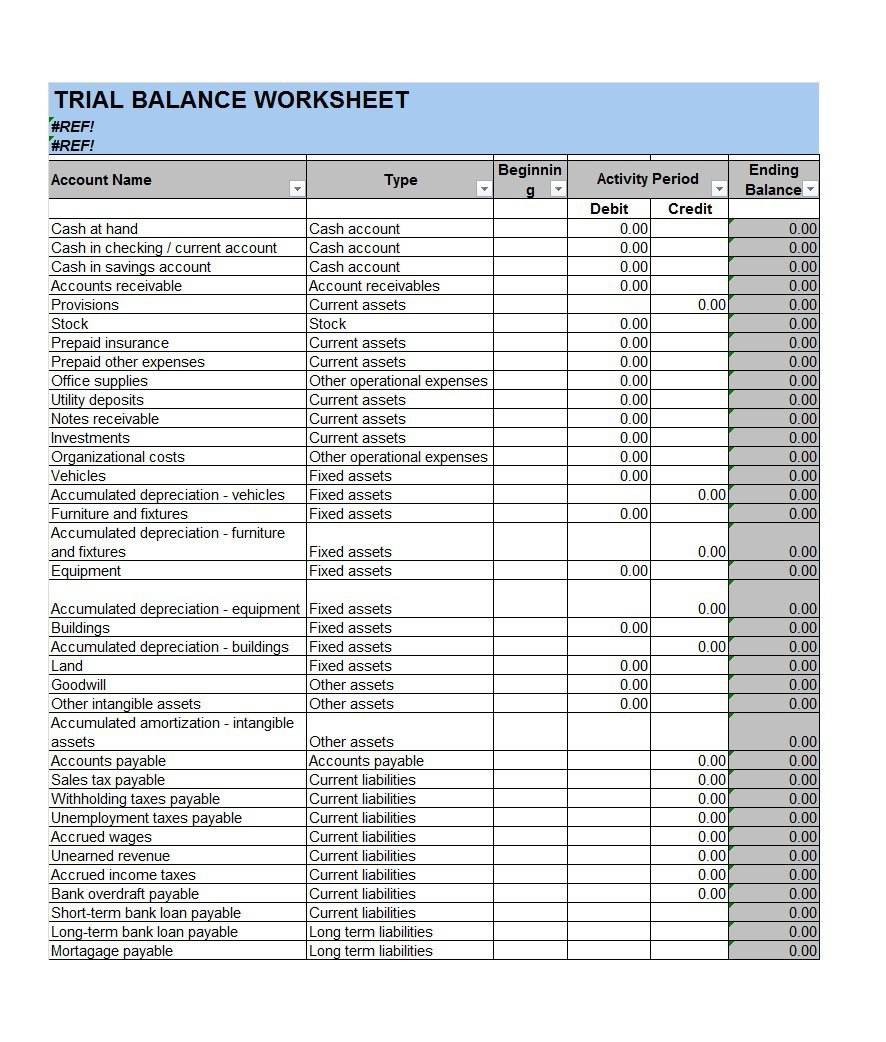
On the other hand, private companies do not need to appeal to shareholders. That is why there is no need to have their financial statements published to the public. It is important to understand that balance sheets only provide a snapshot of the financial position of a company at a specific point in time. It is helpful for business owners to prepare and review balance sheets in order to assess the financial health of their companies. Businesses should be wary of companies that have large discrepancies between their balance sheets and other financial statements. Examples of activity ratios are inventory turnover ratio, total assets turnover ratio, fixed assets turnover ratio, and accounts receivables turnover ratio.
Resources

Equity can be further broken down into common stock, retained earnings, and other comprehensive income. Current liabilities refer to debts or financial obligations that must be settled within a year. Many businesses manage a variety of these liabilities, including accounts payable, deferred revenue, taxes payable, and salaries payable. Vigilant monitoring of your current liabilities is crucial, as excessive debt can pose a significant financial risk to your business. The balance sheet provides stakeholders, such as investors, creditors, and management, with crucial information about the company’s financial standing. It’s not just a document, it’s a window into the company’s financial health.
Owner’s Equity/ Earnings
If it’s publicly held, this calculation may become more complicated depending on the various types of stock issued. It’s not uncommon for a balance sheet to take a few weeks to prepare after the reporting period has ended. An asset is anything a company owns which holds some amount of quantifiable value, meaning that it could be liquidated and turned to cash. Some companies issue preferred stock, which will be listed separately from common stock under this section.
Comparative Balance Sheet Analysis: Formulas and Calculations
Its liabilities (specifically, the long-term debt account) will also increase by $4,000, balancing the two sides of the equation. If the company takes $8,000 from investors, its assets will increase by that amount, as will its shareholder equity. All revenues the company generates in excess of its expenses will go into the shareholder equity account.
Capital and Net Assets
- Fixed assets or long-term assets are things a business owns that it plans to use for a long period of time.
- For investors and financial enthusiasts, a solid grasp of the balance sheet is not just beneficial, it’s crucial.
- An accounting method wherein revenues are recognized when cash is received and expenses are recognized when paid.
- Likewise, its liabilities may include short-term obligations such as accounts payable and wages payable, or long-term liabilities such as bank loans and other debt obligations.
For instance, investors can compare two balance sheets, from different years, to judge whether a firm is properly managing its debts and whether its assets are used to produce revenue. An accounting balance sheet is a portrait of the financial standing of a business at a point in time. This financial report is similar to a personal financial statement that someone may fill out when applying for a loan to show their assets and liabilities.
What are balance sheet accounts?
For instance, a company with strong assets and steady equity growth may be seen as an attractive investment opportunity. On the contrary, a company burdened with excessive debt or declining equity might raise concerns about its long-term viability. Current liabilities are customer prepayments profit margin vs markup: what’s the difference for which your company needs to provide a service, wages, debt payments and more. When you’re starting a company, there are many important financial documents to know. It might seem overwhelming at first, but getting a handle on everything early will set you up for success in the future.
To ensure the balance sheet is balanced, it will be necessary to compare total assets against total liabilities plus equity. To do this, you’ll need to add liabilities and shareholders’ equity together. A balance sheet represents a company’s financial position for one day at its fiscal year end—for example, the last day of its accounting period, which can differ from our more familiar calendar year. Public companies, on the other hand, are required to obtain external audits by public accountants, and must also ensure that their books are kept to a much higher standard. If a company takes out a five-year, $4,000 loan from a bank, its assets (specifically, the cash account) will increase by $4,000.
A horizontal balance sheet is a financial statement with additional columns to show changes in the amounts of assets, liabilities, and equity of a business over multiple years. This makes it easier to see the financial performance of a business as multiple years are on one page. Assets are ordered in terms of liquidity or how long it would take to change into cash. Current assets are the same as short-term assets and those are assets that are expected to be sold or turned into cash within one year. Cash is considered the most liquid of all assets, but other short-term assets include items like accounts receivable and prepaid rent or prepaid insurance..
Any number of people could be using your statement of financial position to make decisions about your business. It is important that you have an understanding of what information the balance-sheet position is providing and what that information is telling you. The layout of a simple statement of financial position for a company for annual reporting purposes is legally defined. However, for management account purposes the layout should be in the format most useful for managing the business. The example below shows a typical and useful format for management purposes.
Understanding the components of a balance sheet is essential for interpreting financial statements accurately. The balance sheet is a crucial tool for investors and analysts to assess a company’s financial health and make informed investment decisions. Assets are everything that a business owns and can use to pay its debts.


